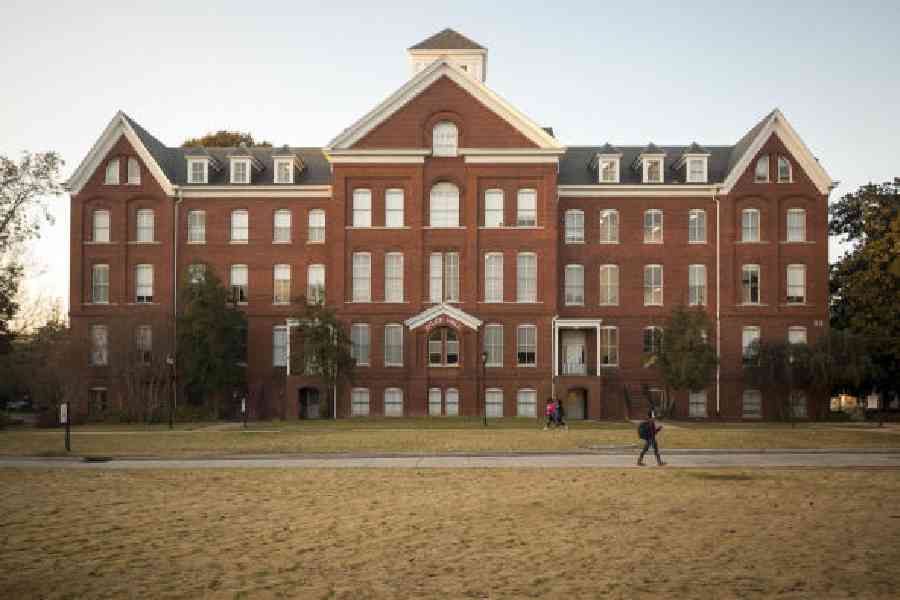Study Abroad: Love ’em or hate ’em


After months of tumult on American college campuses, relative stability in one realm returned recently, when the U.S. News & World Report published its oft-disparaged but nevertheless closely watched rankings. Many top schools held the same, or similar, spots they had a year ago.
Princeton was ranked No. 1 again, followed by the Massachusetts Institute of Technology and Harvard. Stanford, which tied for third last year, fell to No. 4. U.S. News again judged Williams College the best among national liberal arts colleges. Spelman College was declared the country’s top historically Black institution.
Few franchises in American higher education are as contentious as the U.S. News rankings. Over the decades, their publisher has faced trouble with manipulated data, complaints about murky methodologies, accusations of revenge and the foundational question of whether it is appropriate to rank colleges.
To U.S. News, which retired its print news magazine in 2010, the rankings are a bastion of its largely bygone influence. They are also a source of millions of dollars each year, as universities pay licensing fees to promote how they fared. U.S. News, which insists that its business relationships with schools do not affect rankings, contends that it is performing a public service by distilling a chaotic collegiate marketplace for weary consumers.
Indeed, to students and their parents, the rankings can be tools for narrowing college searches. To university leaders, the rankings are often publicly heralded but privately detested. To regulators, including US education secretary Miguel A. Cardona, the rankings are responsible for “an unhealthy obsession with selectivity”. And to almost everyone outside U.S. News, they are opaque and, ultimately, almost uniformly misunderstood.
The top-line categories — national universities, liberal arts colleges and historically Black colleges and universities — typically have few changes from year to year, especially at the top of the rankings. But last year, U.S. News reworked its methodology. The publisher said it was the most substantive overhaul since the rankings debuted in 1983.
Bowing to critiques that its model did not adequately account for ideals that administrators often talk about, like promoting social mobility, U.S. News put more weight on retention and graduation rates for people with need-based Pell grants. The result was that some public universities surged in the rankings while a handful of private schools saw their stature drop.
U.S. News made far fewer consequential changes this year and said that its “most significant” shift was the decision to drop the six-year graduation rates of first-generation students from some formulas. The publisher said that while it “still supports this metric in principle”, it had heard feedback that the measure was insufficiently standardised.
In turn, the rankings showed that consistency had largely returned — at least until U.S. News alters its formulas again.
Four universities that were already in the top 10 — the California Institute of Technology, Duke, Johns Hopkins and Northwestern — all climbed to tie for No. 6. The University of Pennsylvania fell four places, to No. 10. Another Ivy League school, Brown, also fell four spots and tied for No. 13 with Columbia, which fell one place.
Columbia has an especially complicated history with U.S. News. Last year, the university said it would no longer supply data directly to the publisher for undergraduate rankings, an echo of similar moves by law and medical schools. It had already fallen to No. 18 from No. 2, after one of its professors accused it of submitting data that was “inaccurate, dubious or highly misleading”. The charge led the university to acknowledge that it had sent faulty information.
Despite scarce changes at the top this year, some schools wound up with sharp movements. Tulane, whose president blasted U.S. News last year after the university plunged to No. 73 from No. 44, saw its standing improve 10 places. And nine institutions climbed by at least 40 spots. But none of them moved higher than a tie for No. 209.
“Across categories, schools in the middle tended to undergo larger year-to-year changes than those placing toward the top and bottom,” U.S. News said.
Reports in recent weeks underscored how fraught the rankings remain and offered new fodder for the debate about whether universities should seek U.S. News’ favour.
Art & Science Group, a higher education consultancy, found that 40 per cent of students do not use rankings at all when they pick colleges and only 3 per cent turn to them through the whole of their college searches.
Vanderbilt University was so thoroughly enraged by its five-spot dip in the U.S. News standings last year that the school commissioned a review of the methodologies of five rankings services. The resulting report argued that those rankings were rife with flaws, including faulty data and subjectivity.
Rankings publishers have routinely argued that their guides are essential but that they should not be the sole drivers of college searches.
U.S. News said it “strongly” advised visitors to its website to “consider the rankings alongside additional information... and in light of personal interests and priorities when deciding where to apply”.
NYTNS